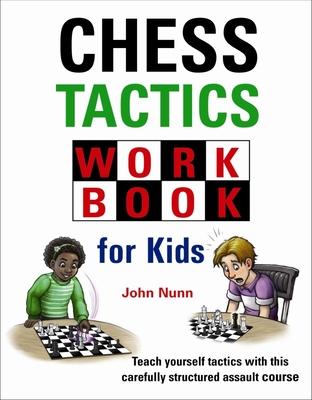
The quickest way to improve your chess is to learn tactics. But not just knowing the themes - you need to get used to using them in real positions. Master tactician John Nunn has thoughtfully crafted a course that gives you the basic nuggets of knowledge and immediately invites you to start finding tactical ideas for yourself.
Chess Tactics Workbook for Kids is the first in a new series of books that help players gain chess skills by tackling hundreds of carefully chosen exercises. The themes are similar to those in Gambit's best-selling 'Chess for Kids' series, but the focus is on getting vital hands-on experience. Many positions build on ones given earlier, showing how advanced ideas are normally made up of simpler ones that we can all grasp.
Each chapter introduces a basic theme and features dozens of exercises, with solutions that highlight the key points. In each chapter there are tips on what to look out for to help spot tactical ideas. As the chapters progress, we increasingly see how tactical ideas are combined together, with ideas from previous sections repeatedly appearing as part of a deadly one-two punch. The book ends with a series of six test papers where you are given no clues about the themes involved.
The quickest way to improve your chess is to learn tactics. But not just knowing the themes - you need to get used to using them in real positions. Master tactician John Nunn has thoughtfully crafted a course that gives you the basic nuggets of knowledge and immediately invites you to start finding tactical ideas for yourself.
Chess Tactics Workbook for Kids is the first in a new series of books that help players gain chess skills by tackling hundreds of carefully chosen exercises. The themes are similar to those in Gambit's best-selling 'Chess for Kids' series, but the focus is on getting vital hands-on experience. Many positions build on ones given earlier, showing how advanced ideas are normally made up of simpler ones that we can all grasp.
Each chapter introduces a basic theme and features dozens of exercises, with solutions that highlight the key points. In each chapter there are tips on what to look out for to help spot tactical ideas. As the chapters progress, we increasingly see how tactical ideas are combined together, with ideas from previous sections repeatedly appearing as part of a deadly one-two punch. The book ends with a series of six test papers where you are given no clues about the themes involved.
Hardcover
$16.95